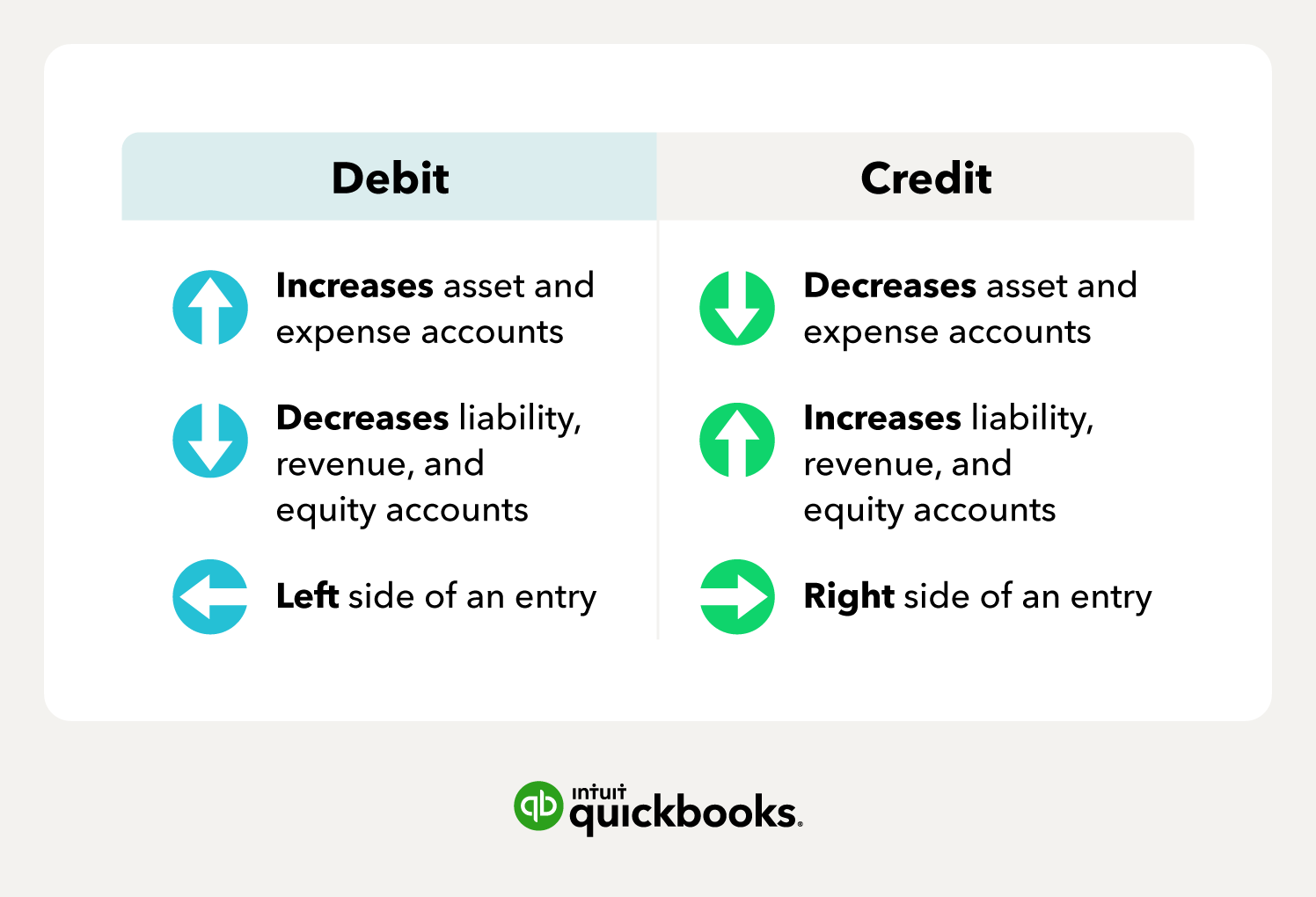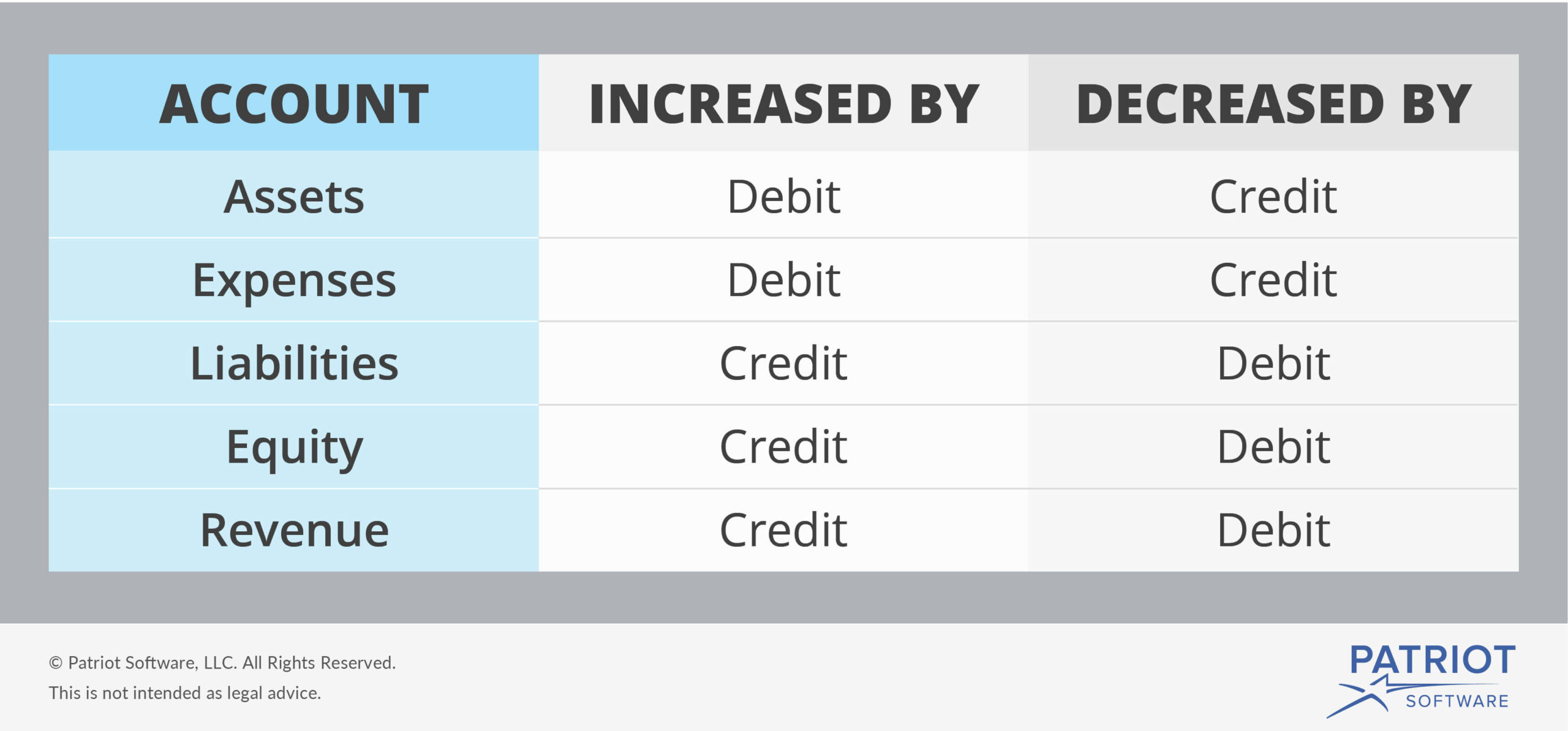
However, only the obligations that come from the company’s operations and its dealings with vendors or suppliers become a part of its accounts payable balances. The next month, Sal makes a payment of $100 toward the loan, $80 of which goes toward the loan principal and $20 toward interest. The main differences between debit and credit accounting are their purpose and placement. Debits increase asset and expense accounts while decreasing liability, revenue, and equity accounts. Can’t figure out whether to use a debit or credit for a particular account? The equation is comprised of assets (debits) which are offset by liabilities and equity (credits).
How Are Debits and Credits Recorded?
11 Financial is a registered investment adviser located in Lufkin, Texas. 11 Financial may only transact business in those states in which it is registered, or qualifies for an exemption or exclusion from registration requirements. Finance Strategists has an advertising relationship with some of the companies included on this website. We may earn a commission when you click on a link or make a purchase through the links on our site. All of our content is based on objective analysis, and the opinions are our own.
What is Accounts Payable? Definition, Recognition, and Measurement, Recording, Example
This means it helps you to minimize late payment costs, such as interest charges, penalties, etc. It is especially important when firms find it challenging to obtain funding via financial or credit institutions. Since the financial crisis, trade credit in the form of accounts payable and accounts receivable has become a stable source of funding. For example, imagine a business gets a $500 invoice for office supplies. When the AP department receives the invoice, it records a $500 credit in accounts payable and a $500 debit to office supply expense. You can generate a recurring invoice report manually, but many business owners use accounts payable automation solutions to build theirs.

How Ramp became KIPP Nashville’s biggest financial win
In general ledger an account titled as “accounts payable account” is maintained to keep record of increases and decrease in accounts payable liability during a period. Since this account is a liability account, its normal balance is credit. When the balance sheet is drawn, the balance shown by this account is reported as current liability. Accounts payable can be considered a credit or a debit, depending on the transaction involved. Accounts payable is a short-term liability owed to a vendor for purchases made on credit.
- Companies incur rent as an accrued expense because this is a cost that’s paid consistently and monthly.
- The debit offset for this entry generally goes to an expense account for the good or service that was purchased on credit.
- Her work has appeared in Business Insider, Forbes, and The New York Times, and on LendingTree, Credit Karma, and Discover, among others.
- The role of a bill payable in bookkeeping is to ensure there are no discrepancies and to forecast future payment obligations.
What is the journal entry for accounts payable?
The balance is debited when the company repays a portion of its account payable. Say, for instance, you receive invoices from your suppliers, these supplier invoices would be recorded as credits to your accounts payable account. These transactions would then increase the credit balance of your accounts payable, so by paying your suppliers in cash, your accounts payable balance will get reduced.
Accounting Ratios
Having complete visibility into your funds also allows you to maintain a good AP turnover ratio and improve creditworthiness. With ClearTech’s gated logins and smart spend insights into line item spikes and vendor spend trends, your company is safeguarded against invoice frauds and less prone to leakages. Now, the accounts payable represents the short-term debt obligations of your business, meaning they form a part of the current liabilities on your company’s balance sheet.
Acme Manufacturing, for example, has $100,000 in payables from 0 to 30 days old, and $15,000 due in the 31-to-60-days-old category. Financial statements also include current assets, which include cash and balances that will be paid within 12 months. If your supplier has determined that you are a credible customer, you may receive early payment discounts on your accounts payable.
You can use this accrual report alongside your recurring invoice report (see below) to help ensure all recurring expenses are accounted for. This includes disbursements made via handwritten checks, electronic payments, bank transfers, money transfers, credit card payments, etc. This can help if you’re searching for payments made within a specific date range, or if you simply want to see what left your account in a given period. You can then compare that ending account balance to the records your vendors and suppliers sent.
Besides his extensive derivative trading expertise, Adam is an expert in economics and behavioral finance. Adam received his master’s in economics from The New School for Social Research and his Ph.D. from the University of Wisconsin-Madison in sociology. He is a CFA charterholder as well as holding FINRA Series 7, 55 & 63 licenses.
Debits and credits are bookkeeping entries that balance each other out. In a double-entry accounting system, every transaction impacts xero accountants in auckland at least two accounts. If you debit one account, you have to credit one (or more) other accounts in your chart of accounts.
For example, if a business takes out a loan to buy new equipment, the firm would enter a debit in its equipment account because it now owns a new asset. For example, let’s say you need to buy a new projector for your conference room. Since money is leaving your business, you would enter a credit into your cash account. You would also enter a debit into your equipment account because you’re adding a new projector as an asset.

